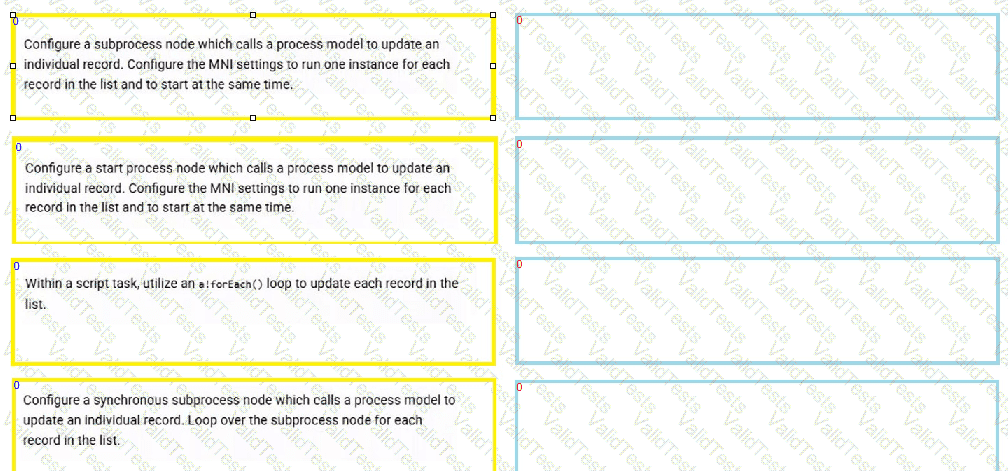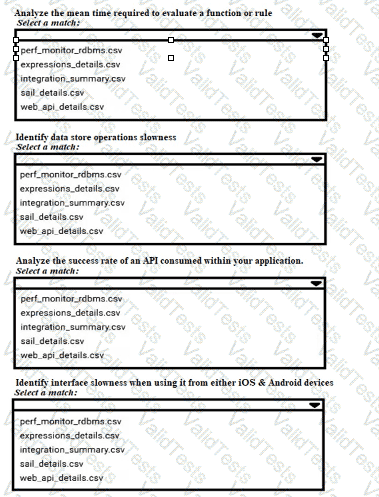You're creating a process to update specific fields in a list of records and you save the updated records to the database.
You're given the following performance considerations:
 Execution time
Execution time
 Process instance memory usage
Process instance memory usage
 Process execution engine load balancing
Process execution engine load balancing
Based on these performance metrics, rank the options from best to worst.
Note: To answer, move all steps from the Options list to the Answer List area and arrange them in the correct ranking order (best at the top, and worst at the bottom).

Match each action you want to perform to the appropriate log type.
Each log type will be used once or not at all. To change your responses, you may deselect your
response by clicking the blank space at the top of the selection list.

You’re making a POST request to the Appian web API. You need to include complex data structures, such as lists or objects, in the request body.
How should you design the API to accept those requests?
You're creating an interface object that displays a report of open cases. This interface will be used as the content of a site page.
Users in the "ACME Employees" group must be able to view the report.
Which two steps should you perform? (Choose two.)
You're creating a new entity-backed record type without data sync enabled. Users in the "ACME Supervisors" group must be able to access the Delete Case related action on the record summary view.
What are two valid steps that you should perform to grant users the appropriate access?
You're refining a story for a centralized distribution center that extends the current application by allowing inventory managers to review orders.
These orders are created through a record action that various workshops access from a shared Appian site.
Which consideration best suits this use case?
After reviewing the latest Expression performance logs, you notice you have several expressions contributing to slow interface or process performance.
Which two conditions will lead to a higher risk associated with slow-performing expressions? (Choose two.)
You're creating a new record type with data sync enabled. Users in the "ACME Employees" group must be able to access the record list and start the New Case action.
What are two valid steps that you should perform to grant users the appropriate access? (Choose two.)
You're designing a report to show the total number of cases per month grouped by region. A synced record exists for the data source.
Which design pattern is most appropriate in this case?
Which section of the Interface Performance View explains the contribution towards the overall evaluation time of the current function, rule, or parameter?